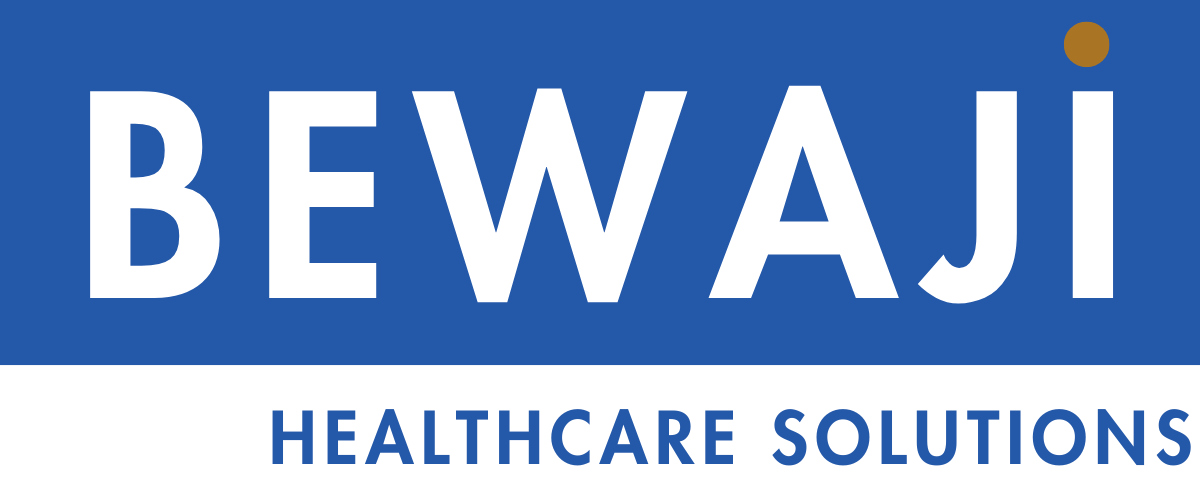Listen to the article on Spotify:
Healthcare professionals grapple with a paradox. On the one hand, they are vested with the noble task of healing and care; on the other, they often find themselves mired in an environment that challenges their job satisfaction and autonomy. Many studies reveal a startling truth: many healthcare workers report feelings of diminished autonomy and job satisfaction, factors critically linked to their performance and the overall quality of healthcare services. Structured check-ins in healthcare
This dissonance in the healthcare work environment – marked by high demands, relentless pace, and a complex matrix of responsibilities – calls for innovative management strategies that transcend conventional boundaries. It necessitates reimagining how healthcare professionals engage with their work and how they are supported in their professional journeys.
At the heart of this reimagining lies a fundamental question: How can the healthcare sector nurture the vitality and dedication of its workforce while upholding the highest standards of patient care?
The answer lies in a promising approach steadily gaining traction within healthcare management circles: structured check-ins. Diverging from traditional, often impersonal management practices, structured check-ins offer a personalized, more empathetic approach to managing healthcare professionals. These sessions are not mere administrative routines but opportunities for meaningful dialogue, allowing healthcare workers to set personal goals and receive supportive feedback tailored to their needs and aspirations.
This essay sets out to analytically examine the transformative potential of structured check-ins in healthcare settings. It posits that by implementing these check-ins, healthcare organizations can empower their professionals, foster a sense of ownership, and markedly improve work outcomes. Through personalized goal setting and supportive feedback mechanisms, structured check-ins can become powerful tools in enhancing communication, fostering professional development, and creating a supportive work environment – all of which are integral to maintaining high-quality healthcare services.
As we embark on this exploration, the essay will unfold the multifaceted benefits of structured check-ins. From personal goal setting that resonates with individual healthcare workers’ aspirations to fostering an environment rich in open communication and continuous professional growth, the subsequent sections will delve into how these check-ins can fundamentally alter the landscape of healthcare management.
Structured check-ins, a systematic approach to engaging employees in regular dialogues, have emerged as a cornerstone for empowering workers. These sessions, characterized by their tailored and personal nature, offer a platform for staff to articulate their career aspirations and set goals that resonate with their individual ambitions. In these moments of reflection and foresight, healthcare workers gain a renewed sense of control over their career paths, an element crucial in a field as demanding as healthcare.
The impact of these discussions extends beyond the individual. By harmonizing personal goals with the broader objectives of the healthcare organization, these check-ins foster a mutual understanding. They are not mere conversations but strategic alignments, ensuring that each professional’s trajectory contributes meaningfully to the collective mission of the institution. In this symbiotic relationship, personal aspirations find their place within the grand narrative of healthcare progress.
Furthermore, these regular goal-setting discussions are pivotal in instilling a sense of purpose and direction. In the world of healthcare, where the unexpected is routine and the stakes are high, maintaining motivation and job satisfaction can be challenging. Structured check-ins become the rhythmic heartbeat of a healthcare professional’s journey, offering clarity amid chaos and direction in the face of uncertainty.
However, this approach is not without its challenges. For some, the essence of setting personalized goals can morph into a source of pressure. Defining and pursuing these objectives might be overwhelming, casting a shadow of doubt and anxiety. This is where the art of structured check-ins truly shines – not just in the setting of goals but in the way these goals are nurtured.
To mitigate these concerns, leaders are tasked with providing clear guidelines and unwavering support. These discussions should be realms of encouragement where goals are set and realistically attainable. Regular reassurance and constructive feedback are vital, transforming what could be a daunting process into a journey of growth and self-discovery.
As we delve deeper into the role of structured check-ins, it becomes apparent that they are more than just a tool for goal setting. They are, in fact, a catalyst for fostering an environment rich in open communication and feedback – elements inseparable from professional autonomy. This transition from individualized goal setting to creating a transparent and supportive workplace culture marks a significant evolution in healthcare management. It’s a shift from seeing healthcare professionals as mere executors of tasks to recognizing them as architects of their professional destinies.
In fostering open communication, these check-ins contribute to a culture where feedback is not just exchanged but is integral to professional development and satisfaction. As we navigate this journey, we are reminded that each thread of individual aspiration weaves the larger picture of communal progress. This sentiment echoes what structured check-ins aim to achieve – a harmonious blend of personal growth and collective achievement woven intricately into the fabric of healthcare excellence.
At the heart of these check-ins lies the invaluable opportunity for two-way communication, a channel through which healthcare professionals’ voices are heard and actively listened to. These sessions transcend the traditional hierarchical boundaries, paving the way for a transparent and inclusive workplace culture. In the bustling corridors of hospitals and clinics, where every decision can weigh heavily, these moments of exchange become sanctuaries of honesty and understanding.
These check-ins offer more than just a forum for expression; they become platforms for immediate and relevant feedback.
Healthcare professionals, equipped with the latest insights and observations from their supervisors, can adapt and refine their approaches, enhancing the quality of care they provide and their personal growth within the profession.
This culture of continuous feedback, nurtured within structured check-ins, fosters a milieu of open dialogue and constructive criticism. In such an environment, feedback is not a sporadic occurrence but a continuous loop, a consistent element that enriches the professional journey of every healthcare worker. It becomes an integral part of the daily routine, a constant companion in the quest for excellence.
However, this well-intentioned practice of continuous feedback is not without its pitfalls. There is a fine line between constructive feedback and what can be perceived as micromanagement, a line that, when crossed, can diminish the autonomy these check-ins seek to bolster. The challenge lies in striking a delicate balance – a balance where feedback does not constrain but empowers, where it is not a directive but a guide.
Healthcare leaders must approach feedback with an empowerment mindset to mitigate the risks of perceived micromanagement. It is about offering guidance while leaving room for individual interpretation and implementation. It is vital to encourage healthcare professionals to take ownership of the feedback and mold it to align with their unique styles and approaches. This approach not only preserves autonomy but also promotes self-directed learning, a cornerstone in the professional development of healthcare workers.
These check-ins allow recognition and acknowledgment of each employee’s unique contributions. In an environment where days can be measured in lives saved and improved, the importance of acknowledging each effort cannot be overstated. These moments of recognition, interspersed within the regular rhythm of check-ins, serve as powerful morale boosters. They remind healthcare professionals that their work, often performed under the most challenging circumstances, is not just valued but vital.
Moreover, regular interactions with leaders during these check-ins do more than facilitate administrative discussions; they foster a sense of belonging and value. When a nurse, doctor, or administrative staff sits down for a check-in, they are not just sharing updates but participating in a dialogue that validates their role in the larger mission. These interactions, marked by genuine interest and engagement from leaders, cultivate a more profound sense of loyalty and commitment. In these exchanges, employees feel seen and heard, a feeling fundamental to their engagement with their work and the organization.
Additionally, these meetings serve as early warning systems for job-related challenges. Structured check-ins provide a platform for early identification and intervention, preventing the seeds of dissatisfaction from sprouting into burnout. They become a space where challenges are not just shared but addressed, where solutions are sought collaboratively, turning potential pitfalls into stepping stones for improvement.
However, the efficacy of regular check-ins is not immune to the risks of monotony. The regularity that makes them effective can also render them routine, potentially stripping them of their vibrancy and impact. To prevent these check-ins from becoming perfunctory exercises, infusing them with dynamism and relevance is crucial. Varying the format and focus of these sessions, introducing new and pertinent topics, and encouraging innovative approaches to problem-solving all serve to rejuvenate these interactions. Keeping the content of check-ins fresh and aligned with current healthcare trends and challenges remains an engaging and valuable tool in pursuing employee satisfaction and engagement.
At the center of these check-ins lies the invaluable opportunity for self-reflection. In a profession where every decision can have profound implications, pausing and reflecting is beneficial and essential. These sessions provide healthcare professionals with a space to step back and contemplate, assess their strengths, and identify areas ripe for improvement. In the stillness of these moments, away from the hustle of hospital wards and clinics, professionals can engage in an honest dialogue with themselves, guided by the structured nature of these check-ins.
Tailoring these discussions to plan and track professional development activities further enhances their value. These check-ins become more than just reflective exercises; they transform into strategic planning sessions. Aligning personal aspirations with organizational goals, they chart a course for ambitious and attainable professional development. Personal growth and organizational advancement are harmonious in this alignment, creating a symphony of mutual progress.
Moreover, regular check-ins reinforce a sense of accountability and commitment to personal growth. In the ever-changing healthcare landscape, where new technologies emerge, and medical paradigms shift, staying committed to personal development is not just a choice but a necessity. These sessions are gentle yet firm reminders of this commitment, keeping healthcare professionals anchored to their personal and professional development goals.
However, the path to self-reflection and professional development is not devoid of challenges. The prospect of self-assessment and the exposure of vulnerabilities can be daunting, stirring feelings of anxiety and apprehension. In these moments, check-ins’ supportive and non-judgmental environment becomes crucial. These sessions mustn’t be arenas for criticism but sanctuaries for growth and learning. By emphasizing constructive feedback and providing resources for skill development, these check-ins can transform apprehensions into opportunities, turning perceived weaknesses into areas for development.
As we transition to the conclusion of this discourse, the cumulative effect of structured check-ins becomes increasingly apparent. These sessions, emphasizing personalized goal setting, open communication, employee engagement, self-reflection, and professional development, merge into a comprehensive strategy.
This strategy transcends the boundaries of individual benefits, aligning seamlessly with the broader objectives of healthcare organizations. Doing so fosters an environment where autonomy is encouraged and celebrated, where job satisfaction is not an abstract concept but a tangible reality.
The journey through structured check-ins in healthcare, from personal goal setting to professional development, narrates a story of growth, empowerment, and fulfillment. It is a story where every healthcare professional is the protagonist and the narrator, shaping their destiny within the larger context of healthcare excellence. As one healthcare pioneer aptly put it, “In the journey of healing, every step of self-reflection and learning is a step towards a brighter future for oneself and those we serve.” This sentiment eloquently captures the essence of the journey through structured check-ins. This journey not only enhances the individual experience of healthcare professionals but also weaves them more intricately into the rich tapestry of healthcare itself.
Implementing Structured Check-Ins for Healthcare Managers: A Step-by-Step Guide
This guide outlines a practical approach to structured check-ins, drawing on successful management practices and focusing on quarterly and yearly intervals.
1. Establishing the Framework:
- Quarterly Check-Ins: Managers should hold meetings every three months to review past performance and set future goals.
- Yearly Strengths Interview: Annually, and for every new employee, conduct a strengths interview.
2. The Quarterly Check-In:
- Preparation: Before the meeting, ensure the manager and the employee have prepared their thoughts on the previous quarter’s performance.
- During the Meeting: Start by discussing the past quarter. Ask structured questions about main focuses, new discoveries, and partnerships. This discussion should last about ten minutes.
- Future Planning: Shift the conversation to the next quarter. Set clear, attainable goals and discuss potential challenges and strategies for overcoming them.
3. The Annual Strengths Interview:
- Focus on Self-Discovery: The annual interview is a time for reflection and self-discovery. Encourage employees to track their own performance and learning.
- Discussing Strengths and Opportunities: Use this interview to understand the employee’s perceived strengths and areas for improvement. The goal is to build upon these strengths and align them with the healthcare organization’s objectives.
4. Practical Implementation:
- Simplicity and Consistency: The management routine should be straightforward, avoiding the complexity of typical appraisal schemes. Focus on what really matters: genuine dialogue and understanding between manager and employee.
- Frequent Interaction: Regular interaction is vital. Don’t limit discussions to formal meetings; informal check-ins can be equally effective in understanding and guiding employee performance.
5. Personalization and Adaptation:
- Tailoring to Individual Needs: Recognize each employee has unique needs and strengths. Adapt your approach to suit these individual requirements, enhancing their performance and contribution to the healthcare team.
6. Nurturing a Supportive Environment:
- Creating a Positive Climate: A supportive environment is essential for the growth of both managers and employees. By consistently applying these structured check-ins, you can foster a culture of continuous improvement and mutual respect.
As we draw the curtains on this exploration of structured check-ins in healthcare settings, it becomes evident that these interactions are more than just managerial tools. They are catalysts for profound transformation within healthcare organizations. The essay has underscored their effectiveness in promoting autonomy and job satisfaction among healthcare professionals, a critical factor in navigating the intricacies of healthcare delivery.
By aligning personal goals with organizational objectives, structured check-ins have shown immense potential in fostering a supportive and communicative work environment that resonates with healthcare workers’ needs and aspirations.
Revisiting the thesis, this analytical examination has illuminated how structured check-ins can empower healthcare professionals, enhancing their engagement and, subsequently, the quality of care they provide. In an ecosystem as dynamic and challenging as healthcare, implementing such personalized management practices is beneficial and essential. It paves the way for a more empathetic, responsive, and effective healthcare system.
However, the path to implementing structured check-ins is not devoid of hurdles. Challenges such as potential routine or perceptions of micromanagement loom, necessitating a careful, thoughtful approach. Mitigating these issues requires continual adaptation and personalization, ensuring these check-ins are as dynamic and evolving as the healthcare field.
The call to action for healthcare leaders and managers is clear: integrating structured check-ins into their management practices, not as a mere procedural formality, but as a cornerstone of their organizational culture. This integration requires an ongoing process of refinement and adaptation, attuned to the changing landscapes of healthcare professions.
The broader implications of adopting structured check-ins extend far beyond individual organizations, potentially transforming healthcare workplace cultures on a larger scale. The healthcare industry can significantly improve employee satisfaction and patient care quality by prioritizing employee well-being and professional development.
Looking forward, the future of healthcare management seems poised for a paradigm shift, with structured check-ins at the forefront of this change. These check-ins represent more than a managerial strategy; they symbolize a commitment to understanding and supporting the human element in healthcare. Such a commitment is desirable and imperative in an industry where the human touch is paramount.
In conclusion, the journey through structured check-ins in healthcare has been one of discovery and affirmation. It reaffirms that at the heart of effective healthcare delivery lies skilled professionals and empowered, satisfied individuals. As the healthcare industry evolves, implementing structured check-ins will contribute to a more responsive, effective, and humane healthcare system.



